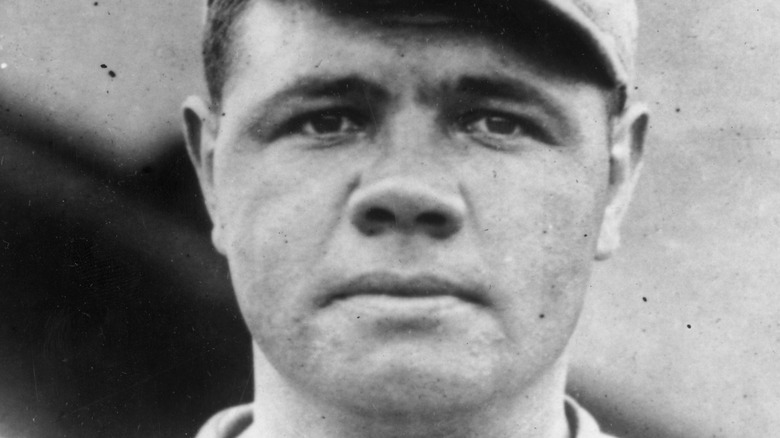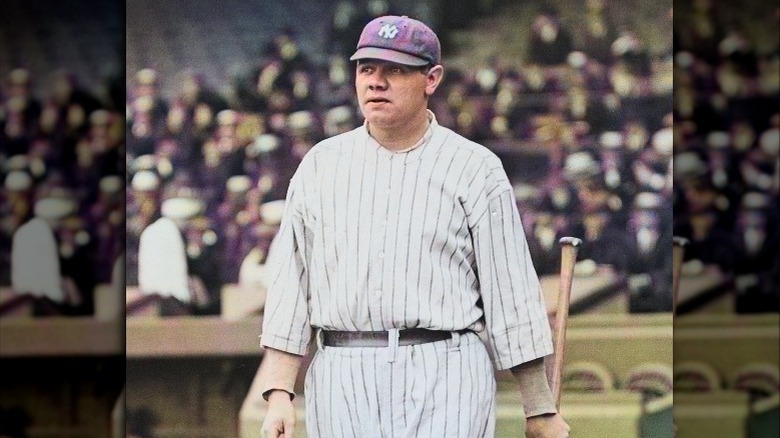Here's How Babe Ruth Would've Looked In Color
Babe Ruth, otherwise known as the Great Bambino (among other things) was born as George Herman Ruth Jr. in 1895 (via Biography). At only 6 or 7 years old, Ruth began to commit petty crimes, vandalism, and chew tobacco (via the Society For American Baseball Research). He was promptly sent to St. Mary's Industrial School for Boys, a Catholic orphanage and reformatory. It's here that the young Ruth was introduced to baseball by a monk. Honing his skills at the school, he was discovered by Jack Dunn, the owner of a minor league team.
In 1914, he joined Dunn's team but soon, he was bought by the Boston Red Sox (via Babe Ruth's website). Over the course of five years, Ruth led the Red Sox to three championships. In 1919, he was sold to the New York Yankees for $100,000. As this was the early 1900s, most if not all photos of Ruth are in black and white. Here's a glimpse of what the iconic pitcher and slugging outfielder looked like in color.
Babe Ruth in color
The photo above, now colorized, was taken at a New York Yankees game in 1920. Ruth's rugged features look the same if not more pronounced, and he looks almost more youthful. His focus is on the game and at least in this photo, he seems indifferent to the spectators behind him. Although it has a timeless essence, the uniform gives away that this is a different era in a different time. Moreover, the uniform is unusually crisp and clean. For a moment, one forgets that they are looking back at someone who has long been gone.
When he retired from baseball in 1935, Babe Ruth held 56 major league records and 714 home runs (via Babe Ruth's website). In 1936, he was one of five players inducted into the Baseball Hall of Fame (via Biography). On August 16, 1948, Ruth died from throat cancer at the age of 53. According to Sports Illustrated, his body lay at Yankee Stadium for two days for those to come and pay their respects. Known for being generous, Ruth spent most of his final years doing charity events and left most of his estate to his foundation for underprivileged children.

